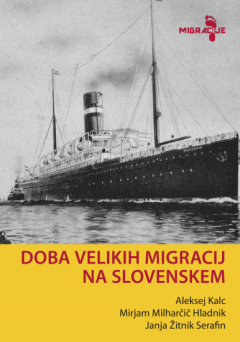Doba velikih migracij na Slovenskem
In the mid-19th century, the area of today’s Slovenia saw the beginning of an era known as the period of mass migrations, when Central Europe, as other parts of the continent before it, began experiencing migrations on a larger scale. By the time World War II began, a total of around 440,000 inhabitants had left the Slovenian area. A demographic vacuum of such size in an area that by the end of the period numbered less than 1.5 million inhabitants, formed due to migration processes of varying intensity and type. These are closely linked to the political, economic, cultural and social happenings of the time. The book provides a general overview of mass migrations that played a key role in shaping the history of Slovenian territories. The work also presents the organisational, cultural and artistic achievements of Slovenian emigrants that found a new home. The aim of the book is to show, with the help of real-life stories, how migrations have always been an integral part of familial survival strategies and everyday life in the given area and historical period.
The work aims to approach emigration and immigration as two sides of the same coin, experienced simultaneously by the individual who is always both an emigrant and an immigrant.
Downloads

Series
License

This work is licensed under a Creative Commons Attribution-NonCommercial-NoDerivatives 4.0 International License.
